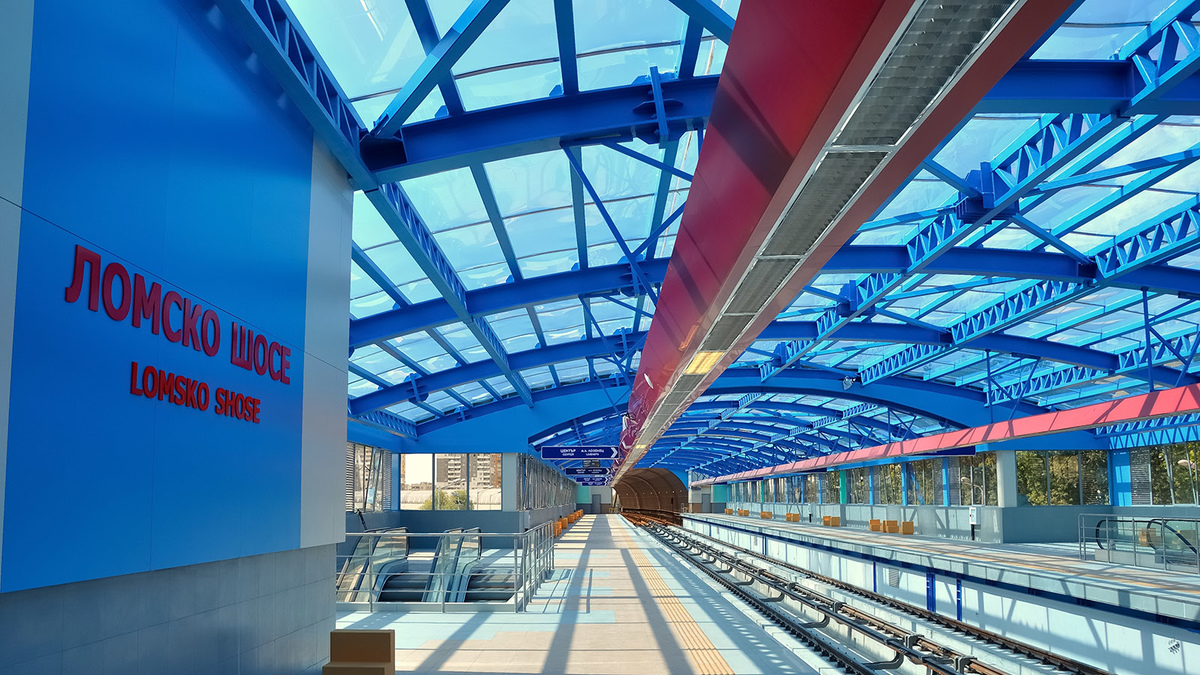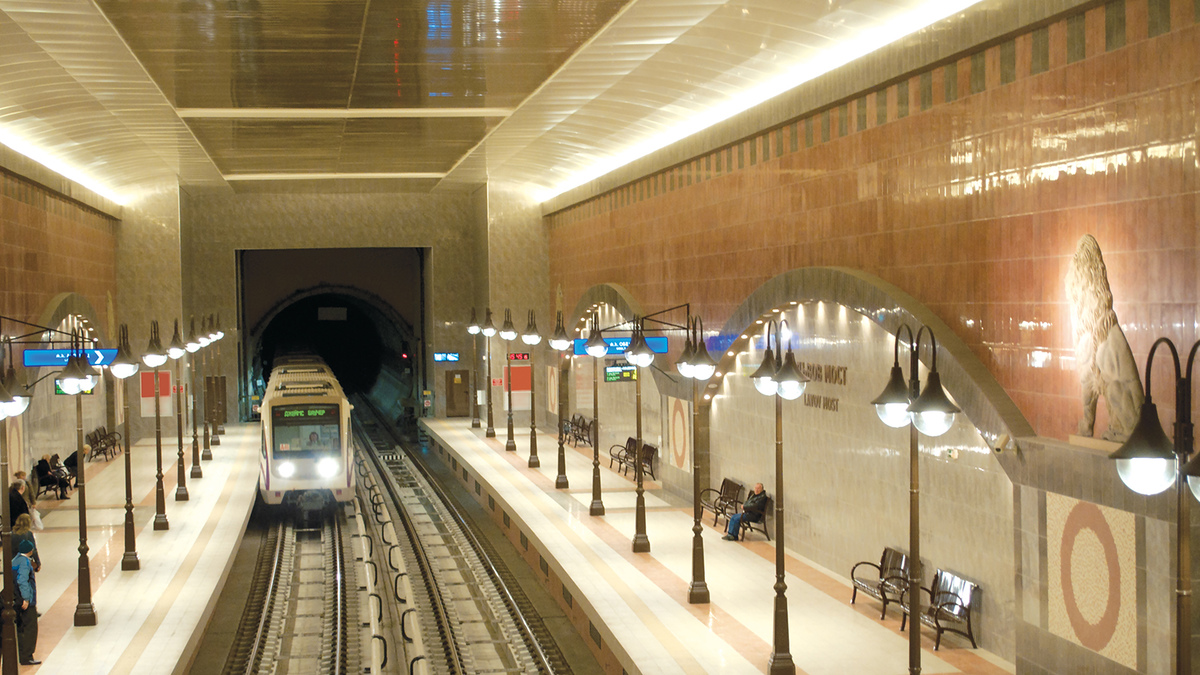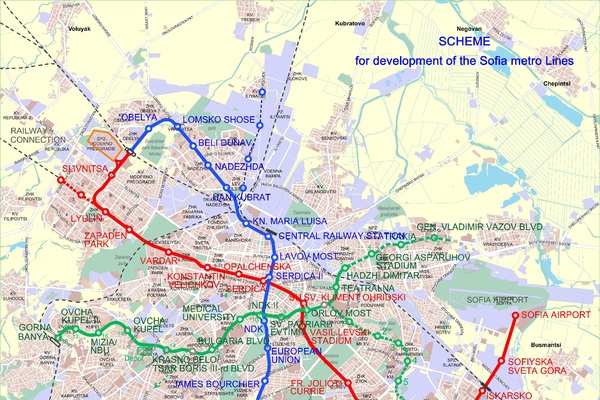General Information of Metropolitan
Metropolitan is owned by Sofia Municipality and serves rapid rail transport – the metro in Sofia. Its main purpose is to provide quick and safe transport for passengers.
- MAIN ACTIVITIES
Metropolitan is owned by Sofia Municipality and serves rapid rail transport – the metro in Sofia. Its main purpose is to provide quick and safe transport for passengers.
- STATUS AND ORGANISATION
Metro construction is based on a Technical and economic report, ratified by the Council of Ministers and more than 10 other Resolutions and Decrees of Council of Ministers and National Assembly of Bulgaria, as well as a number of resolutions of other ministries and Sofia Municipal Council. For the realization of the plan, by the means of a special decree of the Council of Ministers, Metropolitan has been established as a company for investment activities in design and construction of the metro as well as operation of sections, put into operation.
The company is managed by a Board of Directors and an executive director, elected by the members of the Board.
HISTORY AND GENERAL INFORMATION ABOUT SOFIA METRO
The capital of Bulgaria, Sofia, is one of the ancient cities in Europe with a rich history. During the second half of the last century when its population is about 500 thousand inhabitants, development of the suburbs began. During the last decades there were built big residential districts, some of them with more than 100 000 inhabitants. As a result of the above-mentioned, and due to the significant migration of the population in the last 15-20 years, together with temporary residents and those living unregistered in the city, the number of inhabitants of the capital exceeds 1,6 million, according to unofficial data.
Due to the limited traffic capacity of the street network and the increased intensity of the daily traffic, big traffic jams on major transport routes are a trivial round, leading to very low traffic speed in peak hours, which is only 10 km/h with the public transport.
|
National Assembly of Bulgaria |
General view of Sofia's historical center |
|
General view of NPC /National Palace of Culture/ |
Traffic in Sofia in rush hour - in the NPC area |
Due to the increased number of population, every day from the periphery to the centre and backwards, big passenger flows are being formed reaching 15 to 30 thousand passengers/hour in one direction. The necessity of efficient public transport in the direction of the largest passenger flows, transport and environmental problems of the city have imposed the start of the construction of the metropolitan in Sofia. Following the ratified by the Council of Ministers of Bulgaria a Technical and economic report on metro and the approved General City Plan, the General scheme for the development of the lines should consist of three diameters with extensions in the periphery, with total length of 75 km, 69 metro stations, with possibility of growth up to 80 km. In the last phase of development it will be able to carry around 1 million passengers daily.
Main parameters of the Metro in Sofia and the general scheme for the development of its lines, according to the Technical-economic report:
| Number of Diameters /Lines/ | - 3 /some of the lines branching in the suburbs/ |
| Total length of lines | - 75 кm with 69 metro stations, including: |
| - Metro Diameter 1 /Line 1/ - Lyulin RD - Airport | - 32 km with 26 stations |
| - Metro Diameter 2 /Line 2/ - Lozenets RD - Obelya RD | - 22 km with 22 stations |
|
- Metro Diameter 3 /Line 3/ - Ovcha Kupel RD – V. Levski RD |
- 21 km with 21 stations |
| Average distance between the stations | - 1000 m |
| Carriage capacity | - 50 thousand passengers per hour |
| Operational speed | - 80 km/h |
| Rail gauge | - 1435 mm |
| Power supply- DC through a contact rail (Line 1 and 2) and overhear rail (Line 3) | - 825 V |
| Minimum headway | - 90 seconds |
| Passengers carried per day after completion of network | - around 1 mln. passengers/day |
| Share in the Public transport system after completion of network | - 60 % /with the branches/ |
Design and construction of the first and second metro line is implemented mainly by Bulgarian companies. For the tunnels of large part of the second line (central section) was used tunnel boring machine produced by the leading German company
Herrenknecht, specially developed for our geologic conditions. The equipment of the basic control and operation systems is produced mainly by leading world companies such as Siemens, Ericsson, Elin, Alcatel, Otis, Kapsch, etc. Bulgarian companies have implemented the dispatch operation system using imported elements base. The software is implemented by Bulgarian companies.
Architectural design of the metro stations in the cities with metropolitans are imposed as basic elements of the urban environment. They are the most characteristic and memorable parts of the metro and usually reflect the time in which the respective section was build or characteristics of the area through which the route passes. Although the design of the stations amounts to only about 2.5-3% of the cost of the site, they have an aesthetic effect on the passengers, create a cozy atmosphere and shape the metro.
For this reason, the design of the metro stations has been done under original individual projects of contemporary architectural solutions.
Following a resertification audit in November 2016, by the means of certificate with the registration number TRBA 100 0690 TUV Rheinland InterCert Kft. certifies that Metropolitan EAD has implemented and applies a Quality Management System with an area of application - operation of the metro of Sofia and investment activity (organization of studies, design, construction and supervision of the new metro stations) meeting the requirements of BDS EN ISO 9001: 2015. The validity of this certificate is from 30.11.2016 to 29.11.2019.








